Flexer is an interactive multi-sensor home work-out device. This project is the result of a semester-long capstone project focused on brand development for post-COVID New Zealand. The project focused on creating a solution for a local cardiac rehabilitation service.
Brief
This work is the result of a University course focusing on seeking creative solutions for the reconfiguring of New Zealand's industry infrastructure within a post-COVID climate. The brand at the focus of this research is a NZ company that provides cardiac rehabilitation and fitness services. The branding redevelopment focuses on the design of an interconnected experience that targets remote healthcare through the use of technology and a digital platform.
Background

Healthcare
COVID has made remote digitalised health interactions and services more common, highlighting an opportunity for a new model of care.
Brand
A Wellington-based cardiac rehabilitation service that offers personalised work-outs and cardiac oriented health services.
Development
Adapting to potential lockdowns, digital franchising, and offering current customers more options through a remote fitness programme combined with a digital platform
Maintaining current points of difference against competition will include the development of:
- Social work-out classes
- Live heart rate data
- Direct contact with physiologist
User Persona
About Ann
Ann is a 72 years old retired woman, diagnosed with atrial fibrillation last year. She recently joined a rehabilitation course, and goes to two group work-out sessions a week.
Technology Use
Ann uses an arm band heart-rate monitor. She is somewhat familiar with social media, but is not a regular user.
Motivations
After becoming aware of her health condition, Ann has become aware of symptoms like heart palpitations and shortness of breath. She feels anxious around her ability to safely exercise but is motivated to get fit again.
A key motivation for Ann is the social environment of working out with others with a similar health condition.
Concept Proposal
The proposed concept is a resistance band product that features an integrated stretch sensor, and a handle piece that includes a heart rate monitor, paired with an accompanying app.
The combination of the band and the app will create the opportunity to have live online work-out classes, where group members can compete to win short games. For example, a certain number of reps of an exercise will accomplish a win.
The use of a sensor with an app will also mean that the user can receive feedback in regards to their performance. For example, if they are not pulling hard enough – or too hard – the app will let them know.
Design Process
The proportions and details of the design were developed through a combination of sketching, cardboard modelling, and foam modelling of the handle. This was combined with an added resistance band, to simulate the ideal use.


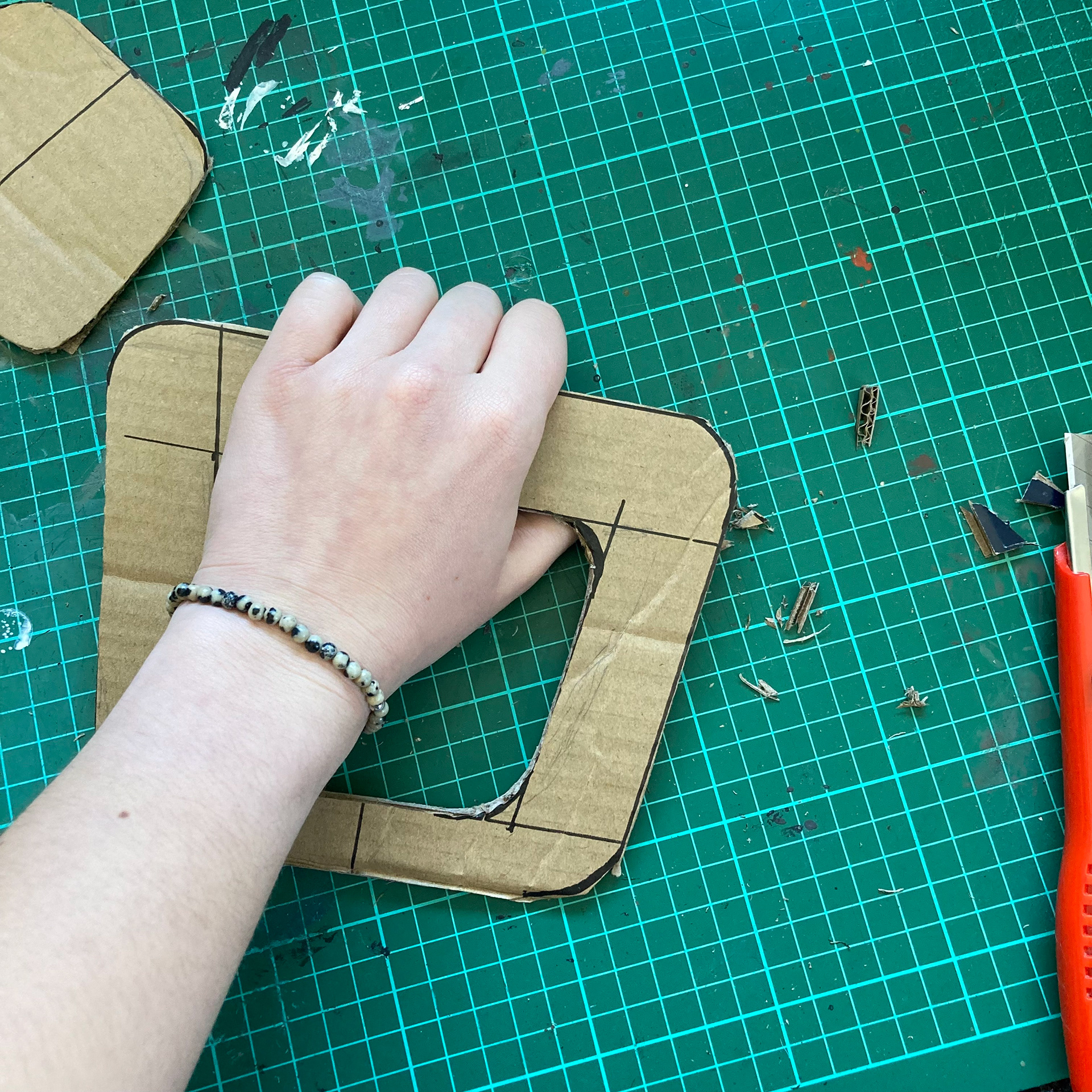

Making of
A digital model of the handle was CAD modelled and FDM 3D printed, using PLA material. The pieces were sanded and spray painted to simulate the handle heart-rate sensor. Assembly included the integration of a resistance workout band.
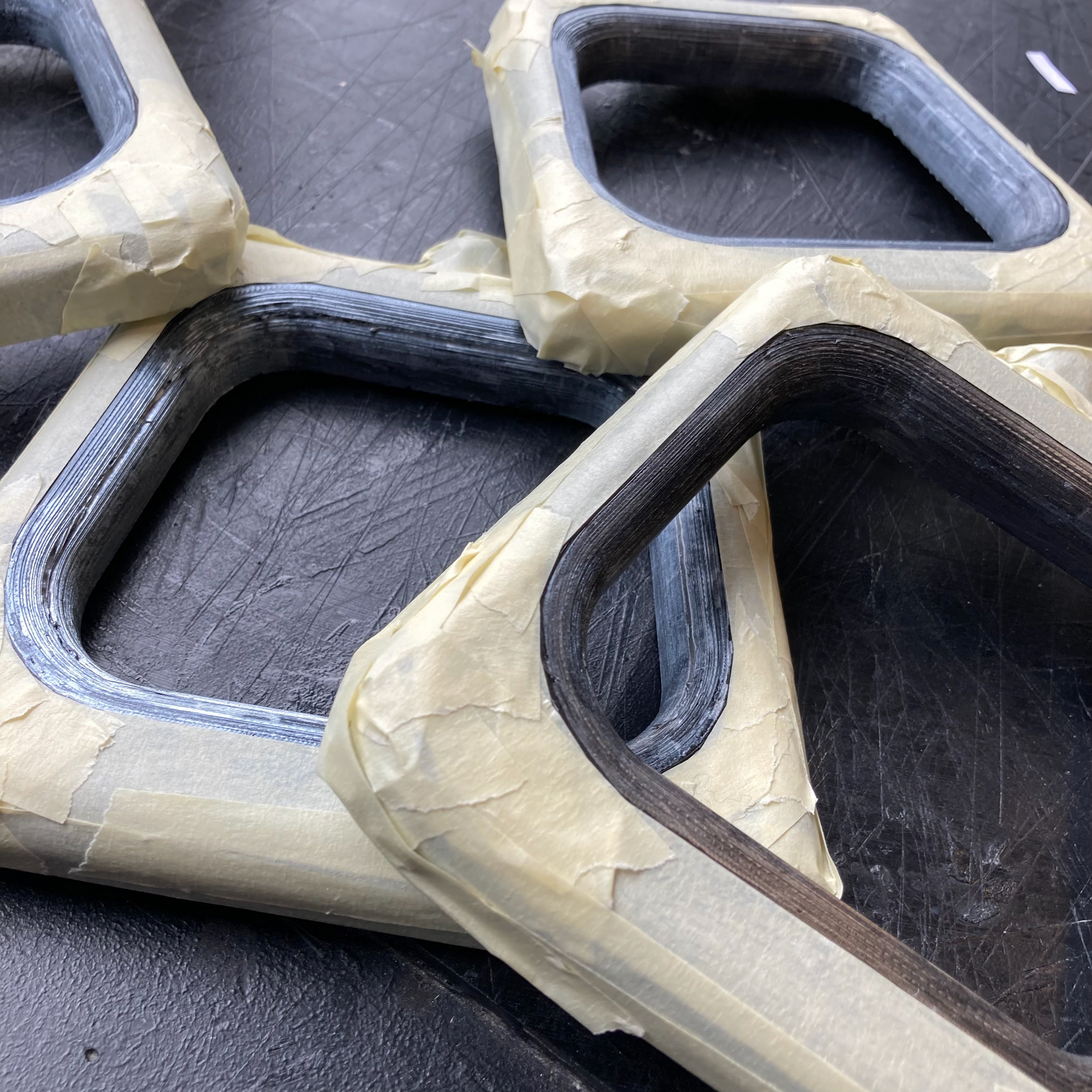
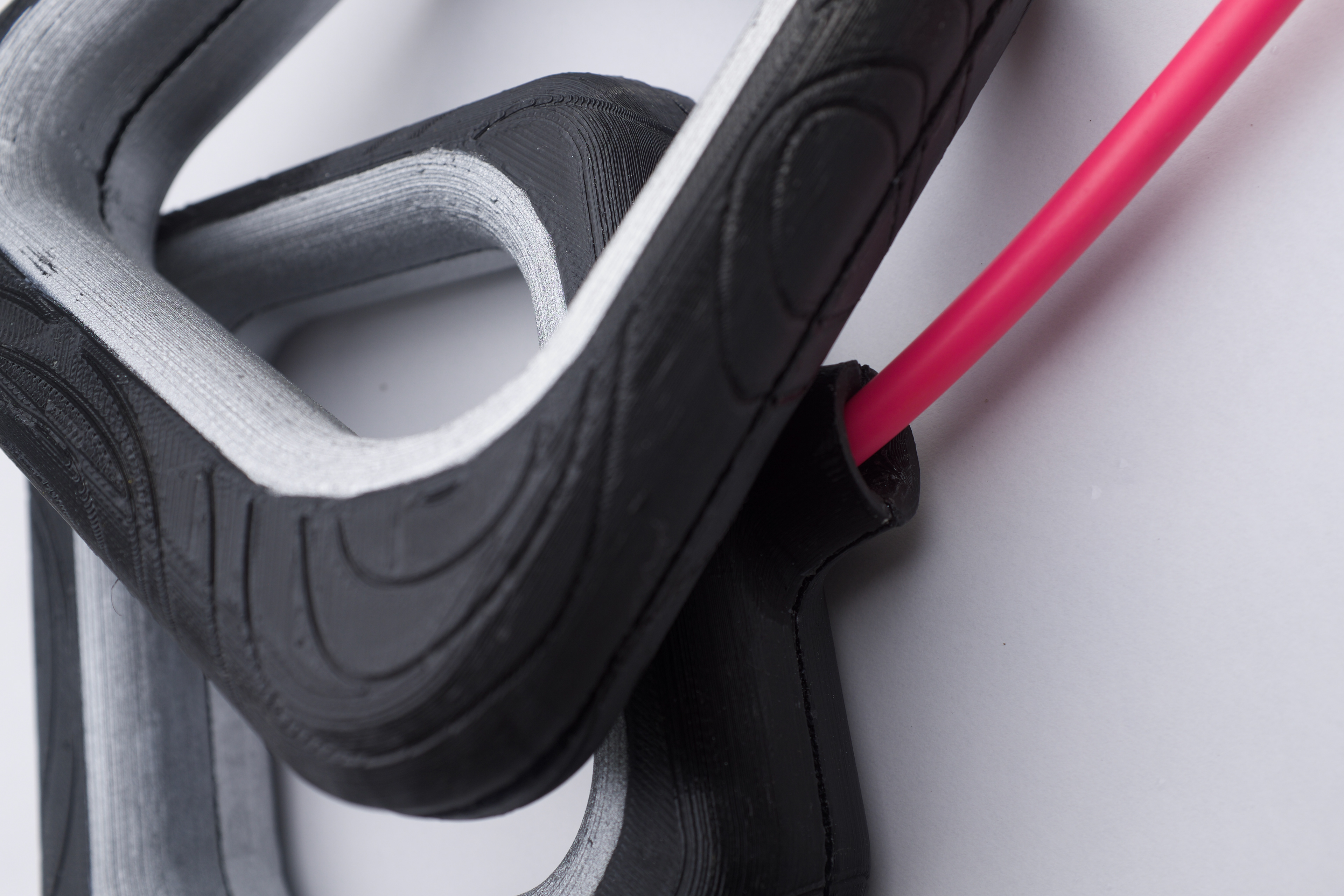
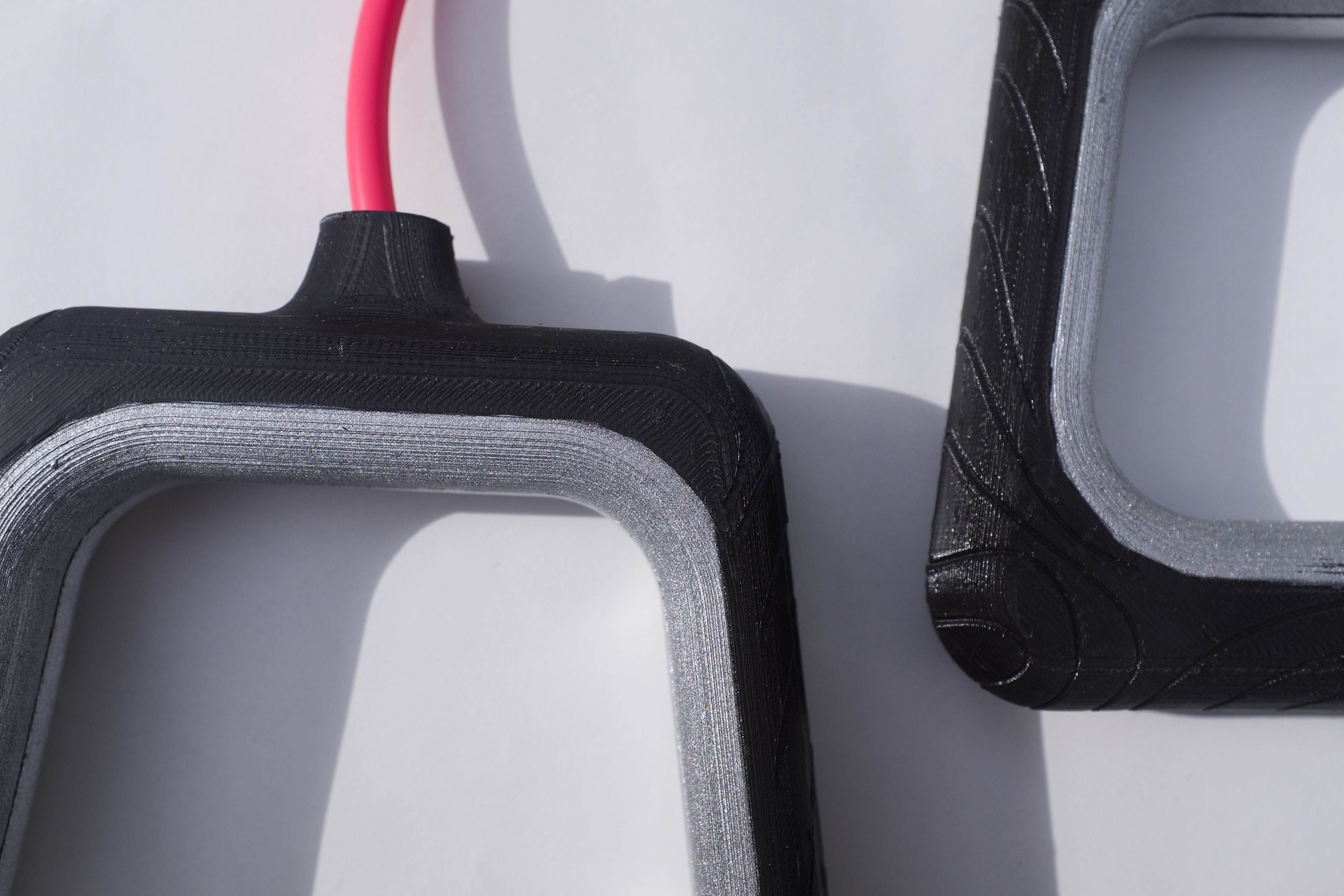
Sensor Research
Flexible and stretchable sensors have the potential to be used within a health monitoring system, specifically as part of the shift to a digital decentralised health care. Harnessing this potential in a product makes use of the non-invasive, comfortable, and efficient aspects provided by flexible sensors.
A suitable flexible sensor for my design proposal is the elastomer stretch sensor by Leap Technology. This is a highly flexible sensor that enables unobtrusive motion capture through the use of three electrodes and an internal microUSB connector pin.
Heart rate data can be gathered through a range of different sensors. The type most applicable to the flexer handle design is a hand grip heart rate sensor, commonly found in stationary exercise equipment. This sensor type registers the electrical signals carried across the surface of a person’s skin each time their heart contracts. A transmitter module within the device detects these cardiac electrical signals through the electrodes in the hand grips. This heart rate data is then wirelessly transmitted to a supported device through Bluetooth. Benefits of having a heart rate sensor integrated into the handles of the product are that it is intuitive to use, and doesn’t require a correct attachment method or process, such as is required by wearable chest strap heart rate monitors.
Exploded and cross-section renders of Flexer
User Interaction
Flexer is accompanied by an exercise guide and a user manual to showcase the intended use, for a cohesive experience.
Exercise Guide
Product Set-up Guide
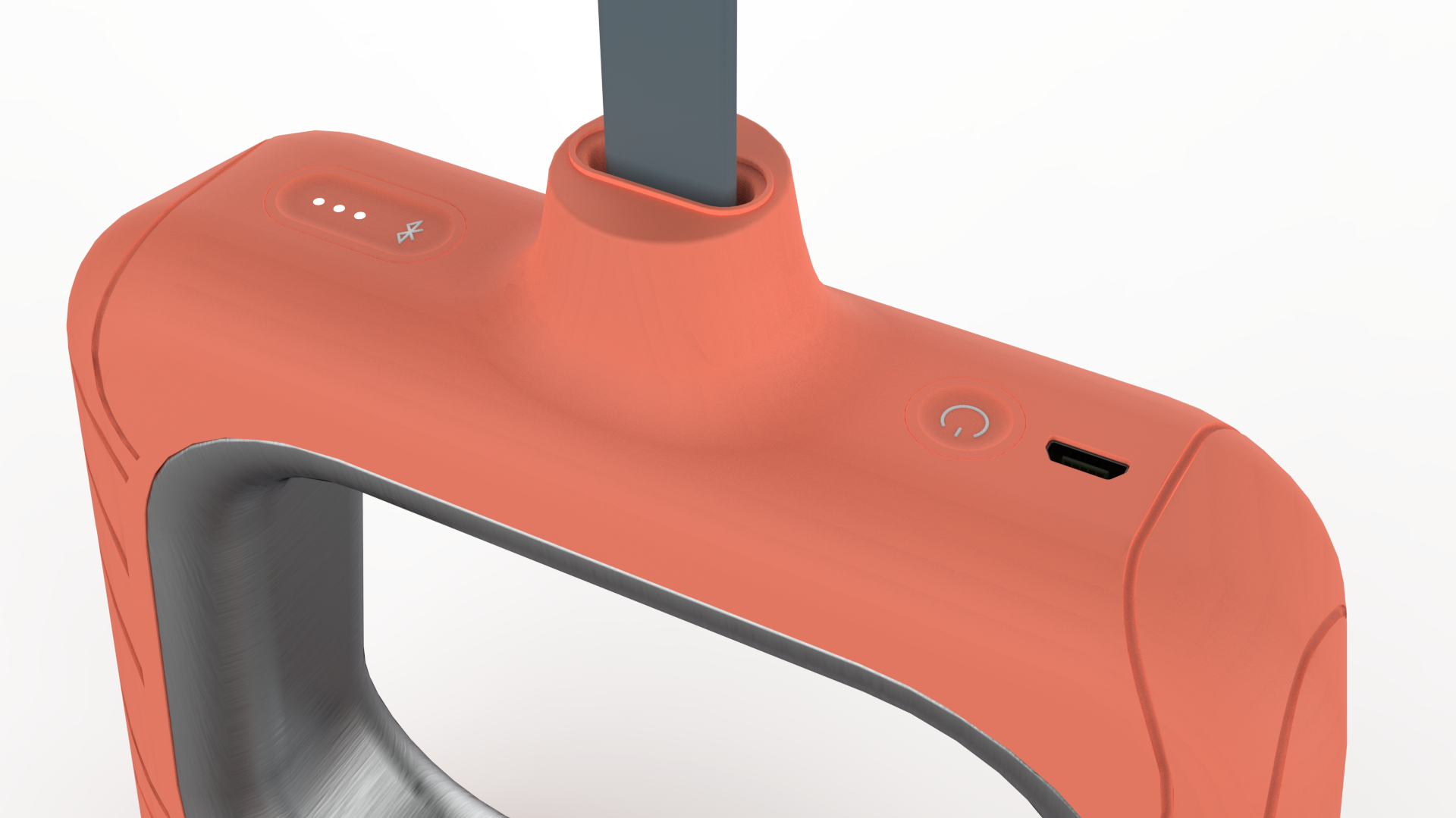
App Design
The accompanying flexer app combines fitness with social connection, providing the ability to track personal health with a live video and messaging function. Through a personal profile that links to the company's calendar, users can join video work-outs with their group mates, as well as message app contacts such as their physiologist. The interface displays heart rate zones, which are customised to cater to each user’s condition. The flex sensor in the resistance band captures movement, making each work-out a social yet competitive game.
The app keeps track of personal health, and gives you the ability to connect with other work-out group members.
Data can be accessed remotely by your physiologist, connecting you to your healthcare professional to help aid you with lifestyle improvements.
With the ability to set individualised health goals, flexer caters to your specific needs such as advising ideal heart rate zones dependant on heart condition and fitness levels.
More details on this project are available on request.